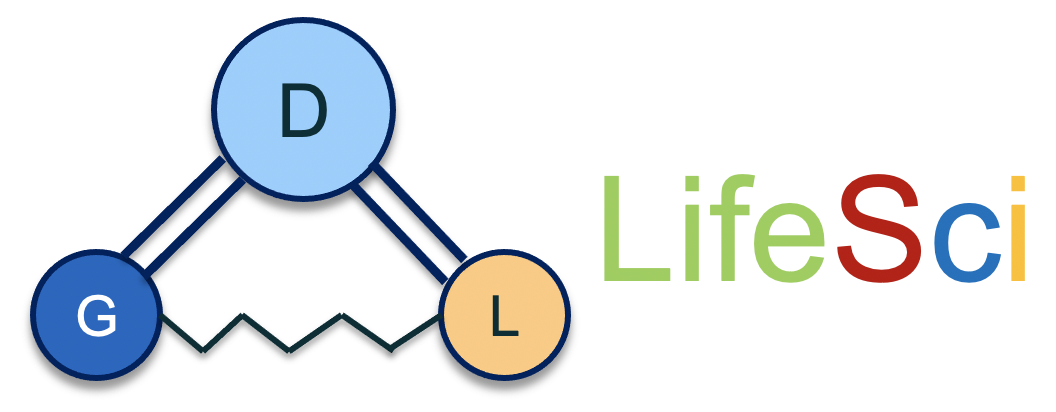Amazon Web Services
AI Shanghai Lablet

Amazon Web Services
AI Shanghai Lablet

Who Are We?

Amazon Web Services AI Shanghai Lablet was established in the fall of 2018 and is part of Amazon Web Services Machine Learning.
We focus on:
- Open-source projects such as the popular Deep Graph Library (DGL) framework
- Fundamental research in the area of graph neural networks (GNNs) and their applications
- Impact to Amazon Web Services customers through Amazon Web Services releases such as SageMaker DGL and Netpune ML
- Actively foster collaboration with the research community
The Latest News
We are happy to announce the release of DGL 2.1. In this release, we are making GNN data loading lightning fast. We introduce GPU acceleration for the whole GNN data loading pipeline in GraphBolt, including the graph sampling and feature fetching stages.

We’re thrilled to announce the release of DGL 2.0, a major milestone in our mission to empower developers with cutting-edge tools for Graph Neural Networks (GNNs). Traditionally, data loading has been a significant bottleneck in GNN training. Complex graph structures and the need for efficient sampling often lead to slow data loading times and resource constraints. This can drastically hinder the training speed and scalability of your GNN models. DGL 2.0 breaks free from these limitations with the introduction of dgl.graphbolt, a revolutionary data loading framework that supercharges your GNN training by streamlining the data pipeline.

We announce the launch of BSChecker, a new tool designed to identify subtle hallucinations in the outputs of large language models (LLMs).

We are thrilled to announce the arrival of DGL 1.0, a cutting-edge machine learning framework for deep learning on graphs.

In the latest DGL v0.9.1, we released a new pipeline for preprocess, partition and dispatch graph of billions of nodes or edges for distributed GNN training. At its core is a new data format called Chunked Graph Data Format (CGDF) which stores graph data by chunks. The new pipeline processes data chunks in parallel which not only reduces the memory requirement of each machine but also significantly accelerates the entire procedure.

In the latest issue of Nature Machine Intelligence, Yousun Jung and his research team at Korea Institute of Science and Technology (KAIST) have proposed a novel generalized-template-based graph neural network called LocalTransform for accurate organic reactivity prediction . The generalized reaction templates demonstrate the built-in interpretability in addition to state-of-the-art prediction accuracy. LocalTransform has been implemented with DGL, DGL-LifeSci and PyTorch.

Six years after the first Graph Convolutional Networks paper, researchers are actively investigating more advanced GNN architecture or training methodology. As the developer team of DGL, we closely watch those new research trends and release features to facilitate them. Here, we're excited to announce a new major release DGL v0.9.

The new 0.8.2 update brings new additions for the GNN community.

V0.8.1 is a minor release that includes module updates, optimizations, new features and bug fixes.

We are excited to announce the release of DGL v0.8, which brings many new features as well as improvement on system performance.

Today, the GAMMA Lab of Beijing University of Posts and Telecommunications officially released OpenHGNN-0.1.0, an Open Source Toolkit for Heterogeneous Graph Neural Network. OpenHGNN is based on DGL [Deep Graph Library] and PyTorch, and includes SOTA models of heterogeneous graph.

Register Now to Unlock Free Trial
Experience over 40 cloud services to quickly find the right solutions for your business
We Provide Open Source Projects for Researchers and Developers

DGL
DGL is an easy-to-use, high performance and scalable Python package for deep learning on graphs. DGL is framework agnostic, meaning if a deep graph model is a component of an end-to-end application, the rest of the logics can be implemented in any major frameworks, such as PyTorch, Apache MXNet or TensorFlow.

DGL-LifeSci
DGL-LifeSci is a specialized package for applications in bioinformatics and cheminformatics powered by graph neural networks.

DGL-KE
DGL-KE is an easy-to-use and highly scalable package for learning large-scale knowledge graph embeddings.
We Provide Open Source Projects for Researchers and Developers

DGL
DGL is an easy-to-use, high performance and scalable Python package for deep learning on graphs. DGL is framework agnostic, meaning if a deep graph model is a component of an end-to-end application, the rest of the logics can be implemented in any major frameworks, such as PyTorch, Apache MXNet or TensorFlow.

DGL-LifeSci
DGL-LifeSci is a specialized package for applications in bioinformatics and cheminformatics powered by graph neural networks.

DGL-KE
DGL-KE is an easy-to-use and highly scalable package for learning large-scale knowledge graph embeddings.
Publications

See publications from Amazon Web Services AI Shanghai Lablet.
Career Opportunities
Amazon Web Services AI Shanghai Lablet is hiring year-round intern positions. Please visit Amazon Jobs to learn more about available positions and job descriptions. Interested candidates are welcome to apply via the position link.

Free Trial of Amazon EC2 T4g Instance
All users can now enjoy 750 free hours of t4g.small instance usage/month untill Dec 31, 2025















